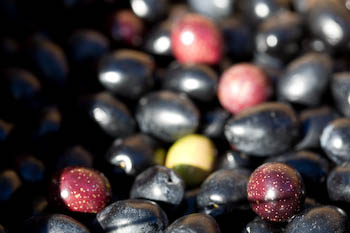Olive oil is an important part of Italian cooking, at least for some regions – that spicy, peppery taste gives an extra dimension to anything it touches. I’ve always wanted to make my own oil but my olive tree is still too small and experiments with wild roadside olives have produced mixed results. This year I got lucky though – my uncle has an untended olive grove on his property and invited the family to come pick some before the emus got them!
Picking olives by hand takes a while, but there is a trick to doing it efficiently. We spread large pieces of shade cloth and tarpaulins on the ground, and then attacked the trees with olive rakes – small handheld plastic rakes that slip easily over leaves and branches but catch the fruit. When each tree was bare, we carefully gathered up the shade cloth and tipped olives into waiting buckets. The olives go to a local plant for pressing. Olives can yield around 10-15% of their weight in oil; I’d be very happy if my share is 20 litres.
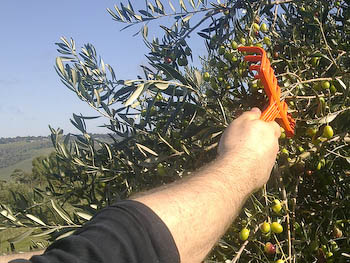
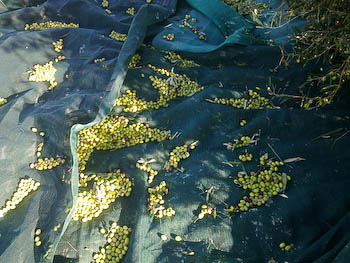
My uncle also has a stand of plump Kalamata olives, so I picked some for curing. Preserving olives isn’t too hard but there a lot of variations – some recipes use lye, some dry salt, some brine and some fresh water. I don’t love the idea of using lye (sodium hydroxide) and in the past my fresh water cured olives have tended to go off more easily, so this year I tried wet and dry salt curing. If they taste as good as I hope these will end up on pizza in tapenade, salads and foccacia among many other uses!
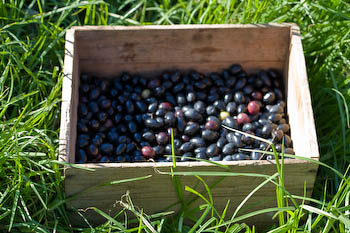
Brined olives
Rinse olives, discarding any soft or shrivelled ones. Fill a clean jar or crock pot with the olives.
Make up brine with 5% cooking salt by volume –half a cup of salt in 10 cups of water. Pour this brine over the olives until covered.
Olives need to stay completely submerged while curing so that mould doesn’t get a chance to grow above the level of brine. A helpful trick I picked up a while ago is to place a loose piece of cling wrap over the vessel, press it down to the surface, then pour a little more brine on top.
Change this brine every day or two, until the olives are no longer bitter – this might take a few weeks. Taste regularly after the first week so you know when they are done.
Finishing brine
Once the initial curing is complete, the olives are marinated in a finishing brine mixture. This mixture helps preserve the olives and can also add other ingredients for flavour. I use one third of a cup of salt to 5 cups of water and 2 cups of red wine vinegar. Other common ingredients are bay leaves, rosemary, garlic, oregano, chilli or basil – add any of these to your own taste. Fill clean jards with the olives, top up with finishing brine and then add a layer of olive oil which will float on top of the jar and prevent air contact. Olives preserved in this way should last for up to a year in the fridge, but will likely be eaten long before that!
Dry cured olives
Half fill a large jar or crock pot with olives. Pour over coarse sea salt until the olives are covered.
Every day, carefully tip out any liquid that has collected in the bottom of the vessel. Taste the olives every week or so until they no longer taste bitter, then preserve with finishing brine as above.
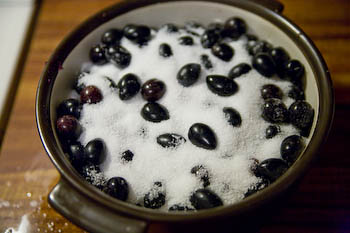
Resources
